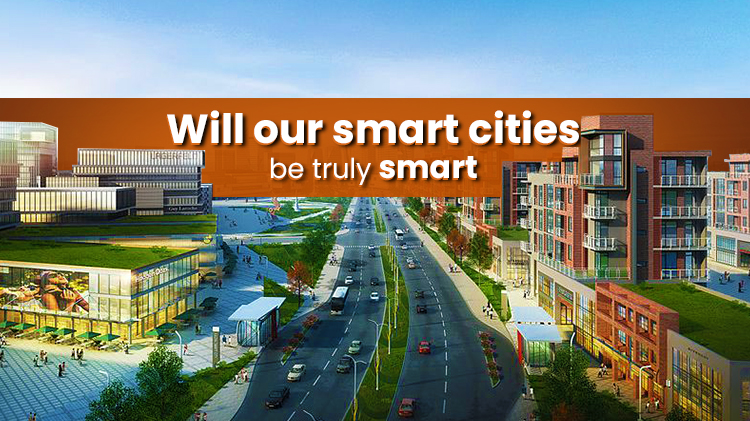A human settlement’s lifespan progresses from a village to a town to a city to a metropolis to a megapolis before decaying into a “necropolis.” India’s economy is expanding rapidly. According to estimates, it will have increased five times by 2030, mostly due to the nation’s urban areas. Our country’s labour force is expected to grow by 270 million workers, with 70% of them working in cities.
Only 30% of India’s land is currently developed, and the cities there have very poor quality of life. However, the fact remains that these cities produce about two thirds of India’s GDP. The country is having a difficult time accommodating this rising population without sacrificing quality of life due to the widespread rural-to-urban migration.
By definition, a smart city is one that can support itself. The integration of affordability, resources, and sustainability is a key component of a smart city. The infrastructure for water, sanitation, waste management, dependable utility services, and healthcare should be provided by smart cities. Its procedures must to be open, uncomplicated, and user-friendly. Smart towns use digital technology assiduously to improve the efficiency of their infrastructure. It is a seamless integration of the economy and the environment.
People should always take precedence over excellent infrastructure and cutting-edge technologies in any city. Instead of being inclusive, there is a possibility that these cities will turn into a haven for the wealthy and famous. Several fundamental inquiries, such as what the purpose of a smart city is. For whom is it meant? Who was it designed for, and are all of their needs and criteria being met by it? Must be addressed.
A McKinsey global labour analysis claims that the approximately 50 million unskilled employees who will enter the workforce over the next ten years are “surplus” to the needs of the Indian economy. The discrepancy in India’s purchasing power parity will therefore be the most difficult issue to resolve.
A Smart City has smart computing systems a cohort of integrated hardware, software, and network information technology with real-time cognizance of the surrounding world that can help citizens make quick decisions.
The property market in India will be greatly impacted by smart cities. The first and most evident is that greater land will be released by the government for urban development and housing as a result of smart cities. It will ensure increased supply and have a negative impact on home values, causing a correction. Additionally, smart cities will increase FDI into the nation. Significant job growth in the real estate industry will also result from it. It will undoubtedly resurrect the Indian real estate industry and attract capital from cities to numerous small communities.
The private real estate players who will be constructing these cities frequently prioritise financial gain over societal objectives. Therefore, a regulatory organisation that can offer precise instructions and a clear vision is essential for the success of this venture.
You may also like: Mapping The Growth Between Indian Investors and Real Estate in Dubai
The issue of affordability is more prevalent when it comes to the economically weaker sections (EWS). The truth is that this part doesn’t have any specific designs offered. As a result, housing the EWS will be these smart cities’ main difficulty and component. About 70% to 75% of the population in need of affordable rental housing will come from villages and this social class. To accommodate them, low rise, high density housing with a straightforward one room unit will need to be built. Most frequently, these units are compelled onto abandoned grounds, which lowers the standard of living.




